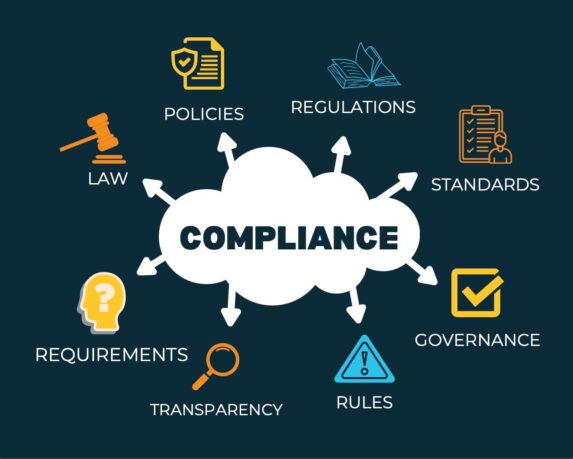CRIO sites were nearly 30% of U.S. COV19 Vaccine Sites. What this means for eSource adoption

The daunting task of COVID-19 trials
The onset of the COVID-19 pandemic posed a new challenge for sponsors. They needed to execute clinical trials at a rate that has never been accomplished before. To succeed, they needed sites that could conduct the trials at unprecedented speed. These are sites with short start-up times, existing large patient databases, and the ability to recruit large numbers of patients quickly. Most likely, they had centralized recruiting through established call centers, multiple levels of redundancy, and high staffing capabilities. Ultimately, these selected sites and their adoption of eSource would be indicative of the growing movement in clinical research towards eSource.
Who were the selected sites?
As expected, the sites selected were high-performing, prolific sites, many of which are part of site networks or academic research centers (AMCs). We analyzed the 245 U.S. sites on Moderna and Pfizer COVID-19 vaccines as available on ClinicalTrials.gov. 49% of the sites are currently part of a larger site network, and an additional 23% are large single-center freestanding sites (generally of the size and scale suitable for network consolidation). Thus, 72% are large and sophisticated private sites. Accordingly, the remaining 28% are academic medical centers or hospital based health systems.
Meanwhile, across the 245 U.S. sites, 27% are current CRIO clients. (Note: Not all were active CRIO clients at the time the trials began – many signed on with CRIO afterwards.)
Why this matters: COVID vaccine studies are the leading indicator of the scope of eSource adoption
The dominance of site networks in the COVID vaccine trials is representative of the growing influence of site networks in the clinical research environment. Increasingly, research will be conducted by a smaller number of large-footprint players, who can bring multiple investigators and locations to sponsors. These larger players bring efficiency and standardization to the table.
Critically, these networks are driving adoption of eSource. They simply cannot operate at scale on paper charts. And as networks become more predominant, CRIO’s site-native eSource system will capture a greater percentage of the data on clinical trials.
When CRIO launched in 2016, CRIO’s footprint within these vaccine sites was 0%. Fast forward three years from now, CRIO could be deployed by 50% or more of the sites within the U.S., with no facilitation whatsoever by sponsors and CROs.
How eSource enables sites to excel
- Increased protocol-driven quality of data: eSource provides a mistake-proof roadmap to follow the protocol and record information accurately. In contrast, paper source (and EMR for that matter) have no safeguards before the data is recorded and the visit is complete. eSource is designed with built-in checks to catch incomplete or incorrect information in real-time before data is saved permanently and the subject leaves the site. The built-in workflows in eSource help sites keep visits within window, track required re-consents, and facilitate contemporaneous PI review and sign-off, all contributing to reduced protocol deviations
- Increased efficiency: Throughout the pandemic and prevalent today, staffing shortages and burnout of healthcare professionals are pressing concerns for many sites. Coordinators are drowning in data entry, hindering site performance. 36.8% of sites reported declining a trial or stopped enrollment for a trial due to lack of personnel resources.¹ By adopting eSource, sites eliminate time wasted flipping through binders, facilitating data entry. Enabling remote access to source also frees up time for site staff to do other tasks like recruitment and conducting visits.
- Remote access: Decentralized clinical trials are all the rage right now. Many sites conducted visits using some variation of the DCT model for COVID vaccine trials. With eSource, everyone from patients to coordinators and PIs to CRAs are able to access the source remotely. Virtual PI sign off reduces the long delays for data locks, and remote monitoring becomes a value proposition for sites when competing for studies.
What this means for sponsors
Adoption of CRIO eSource by sites unlocks HUGE opportunities for sponsors. It means that sponsors now have an electronic tool that they can use to translate the protocols into standardized templates that drive compliance at point of capture. With real-time data capture, sponsors and CROs can then streamline their own monitoring process with CRIO’s Reviewer EDC tool. Sites can allow ClinOps personnel to review the site data directly in Reviewer EDC, a separate application that aggregates study-wide data to facilitate centralized and remote monitoring. In this way, sponsors can get direct access to data in real-time, thus moving away from periodic and costly on-site monitoring schedules.
Furthermore, with no need to re-enter data into an EDC, the CRIO system could eliminate SDV entirely as well as the unnecessary and redundant form-by-form, field-by-field review performed by Data Management, who are often far removed from the sites and ill equipped to interpret the progress notes, uploaded medical records and other critical components of source data that inform eligibility and safety decisions.
Rethink the norm
In short, the ongoing revolution within the research site world is teeing up a significant and unprecedented opportunity right under sponsors’ noses. At some point, the obvious question will arise. If 50% of the data is going through CRIO, then the endpoint data is already protocol-compliant and immediately reviewable and lockable. So why are we requiring the sites to transcribe this already-clean data into a secondary system (i.e., EDC)? Why are we then having monitors fly on-site 6 weeks later to confirm transcription accuracy (i.e., SDV) and DM to review and query the (transcribed) data? It’s like taking a clean load of laundry out of the dryer, packing them up, then traveling to another laundromat to run it through again!
Savvy sponsors and forward-thinking CROs who understand the dynamics at play here and get ahead of the curve can reap significant benefits in quality, speed and expense. Who knew that the next greatest innovation in clinical research would have originated organically from the sites?
—
Footnotes:
1. From ACRP survey conducted in Oct-Nov 2022





